By Paul Guzzo, University Communications and Marketing
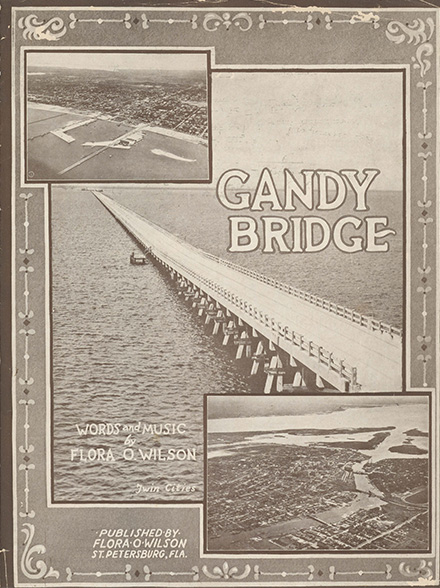
Happy 100th birthday to the Gandy Bridge!
By spanning Old Tampa Bay, its original iteration was the first bridge to connect Hillsborough and Pinellas counties.
A closer look at its history, stored at the USF Library on the Tampa campus, shows the significant impact that it had on the region.
Without the Gandy Bridge, we might have professional sports teams with only Tampa or St. Petersburg in their names, rather than each team using the more encompassing Tampa Bay.
“The Gandy Bridge could be credited with starting what we now know as the community of Tampa Bay,” said Andy Huse, curator for Florida Studies at the USF Tampa Library.
Huse is associate librarian at Special Collections, where thousands of boxes contain historic documents and artifacts of national and international prominence that describe and contextualize diverse experiences from the 1500s to the present day.
An example is the box for George Gandy, the land developer who built and first owned the bridge bearing his name.
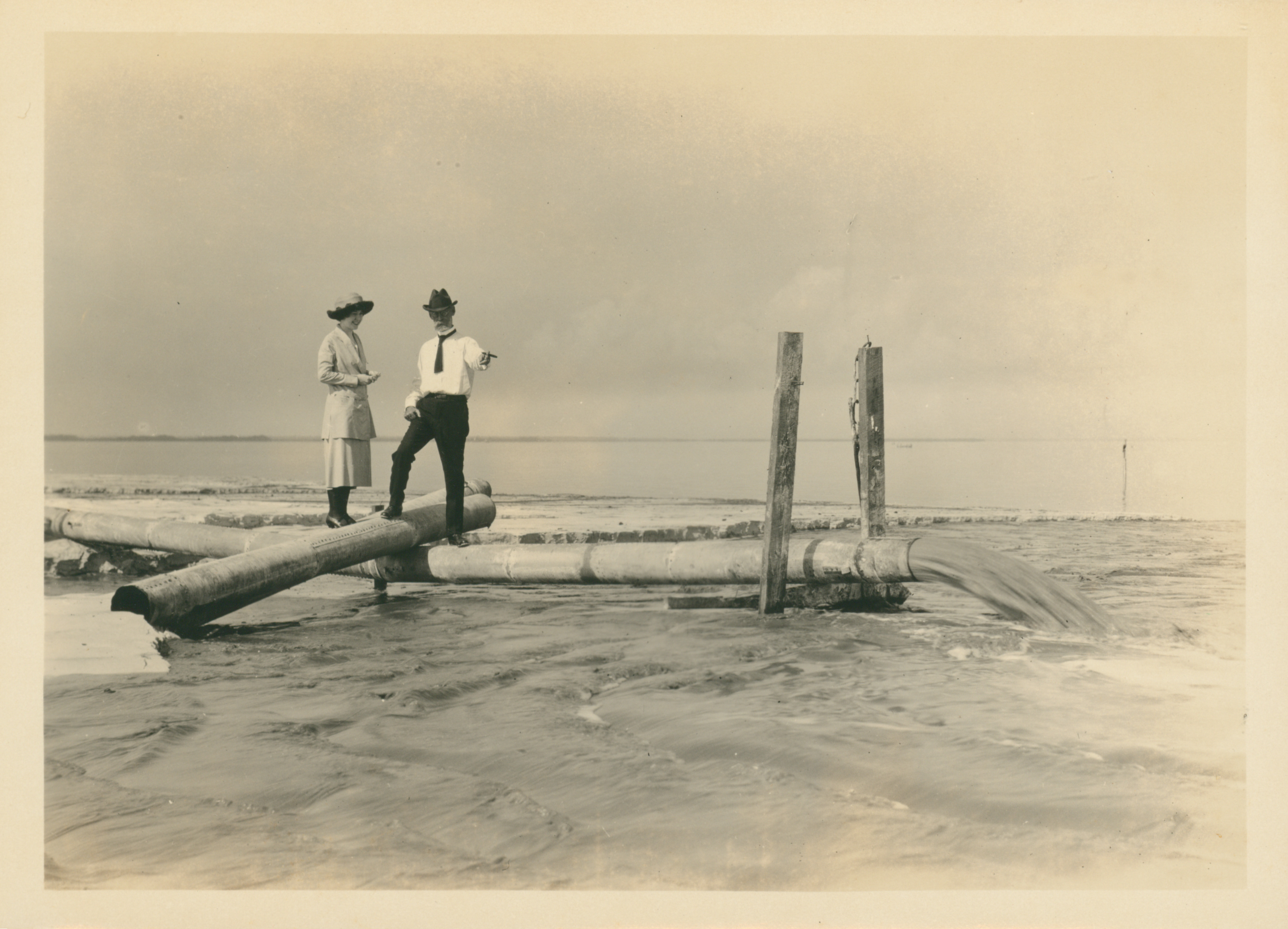
George Gandy oversees construction of the bridge that will be named for him. [Photo courtesy of USF Special Collections.
Original Gandy Bridge
- 170,000 sacks of cement
- 30,000 tons of gravel
- 15,000 tons of sand
- 3,500 tons of steel
- 1.5 million feet of lumber
- 7,000 tons of rock
- 1,125,000 bricks
- 75,000 feet of electrical cable
Through old photos, news clippings, financial documents, land and stockholder warrants, mortgages, receipts and articles of agreement, the box’s contents seemingly answer any question one might have about the original Gandy Bridge.
Total cost? $3 million. Total number of people who erected the 2.5-mile, 24-foot-wide steel and concrete structure, which was the lengthiest automobile toll bridge in the world at that time? 1,500.
Who was George Gandy? A developer who specialized in the transportation industry, his previous work included erecting trolley lines in Philadelphia before relocating to the Tampa Bay area where he served as president of the St. Petersburg & Gulf Electric Railway Co. and then turned his attention to constructing the Gandy Bridge, financed through stock offerings.
And easily the most important question answered through the George Gandy box: Why was the bridge so important to the area?
“We Americans, ever since the days of Benjamin Franklin, have said laconically that ‘time is money,’” reads the program distributed at the bridge’s official opening. “If that is true, which undoubtably is to the most of us who have worked for our bread and butter, the accumulated saving of time, based on estimates of the volume of traffic expected to flow over the bridge, becomes something to marvel at understanding, like the figures of astronomers when calculating distances in inter-stellar space.”
It simply comes down to mileage, said Gary Mormino, professor emeritus and co-founder of the Florida Studies program at USF. “The distance between Tampa and St. Petersburg before the bridge was around 50 miles. And because the roads weren’t great, it was an all-day trip.”
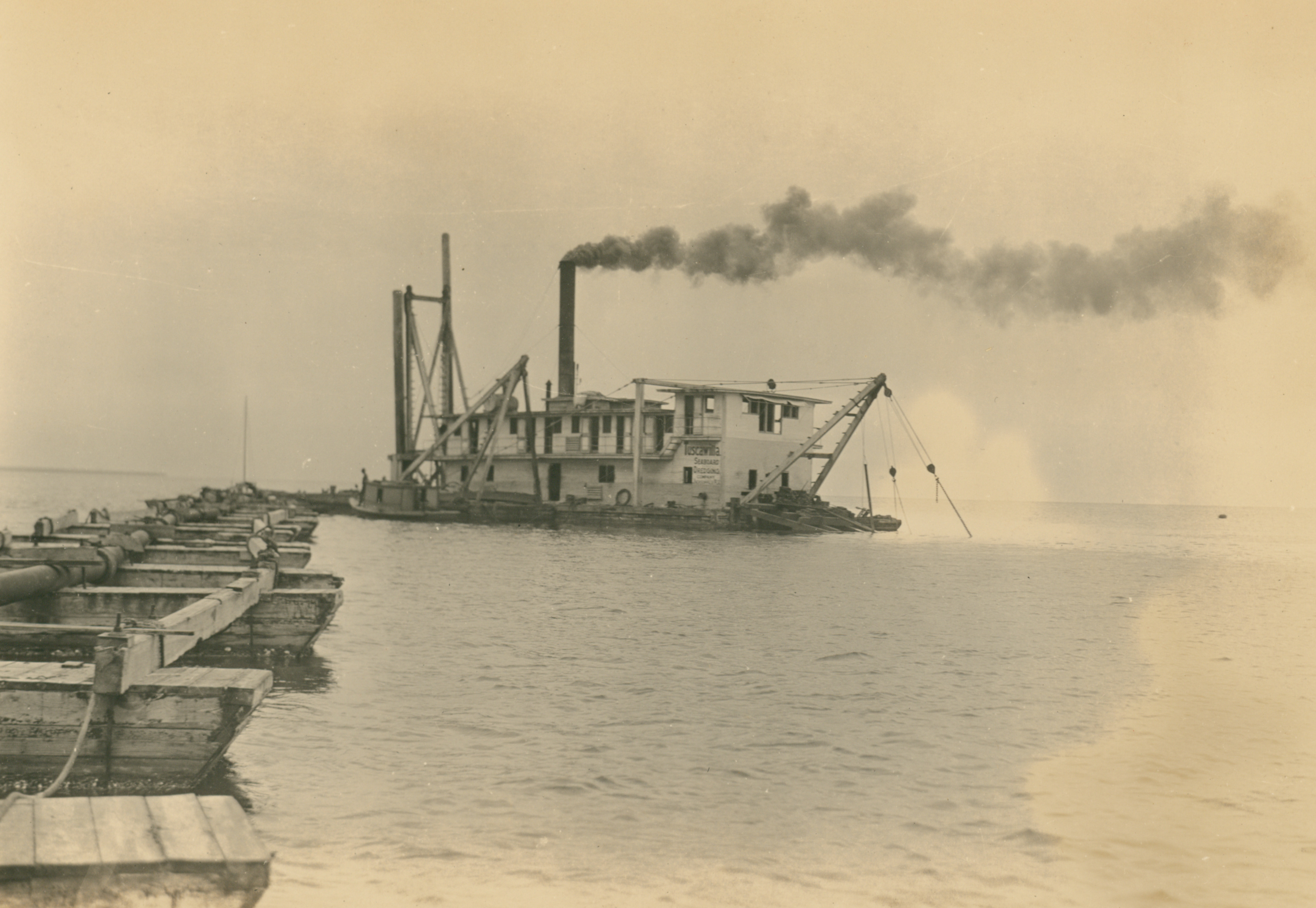
The original Gandy Bridge while under construction. [Photo courtesy of USF Special Collections]
According to the information available through USF Special Collections, the Gandy Bridge cut that down to 19 miles and a 45-minute trip. The program celebrated how the bridge would promote development in both counties because they were more accessible. And, through advertisements, Hillsborough and Pinellas businesses, primarily hotels, also introduced themselves to residents who, before the bridge, might not have made the trek to the other county.
“The Gandy Bridge represented freedom,” said Evangeline Linkous, an associate professor in USF’s School of Public Affairs where she directs the Master of Urban and Regional Planning (MURP) program. “People suddenly had the freedom and flexibility to drive to the beach in St. Pete or the city in Tampa. The bridge extended people’s livability outside their urban core.”
In a way, as Huse pointed out, the bridge turned the two counties into a single area, an opinion accentuated by one of the George Gandy box’s newspaper clippings with a headline reading, “St. Petersburg and Tampa United.” Another article predicted the synergy would attract major sports events, like big-time boxing matches, to the area. And the program hailed the bridge for “linking together the two greatest cities of the Florida West Coast.”
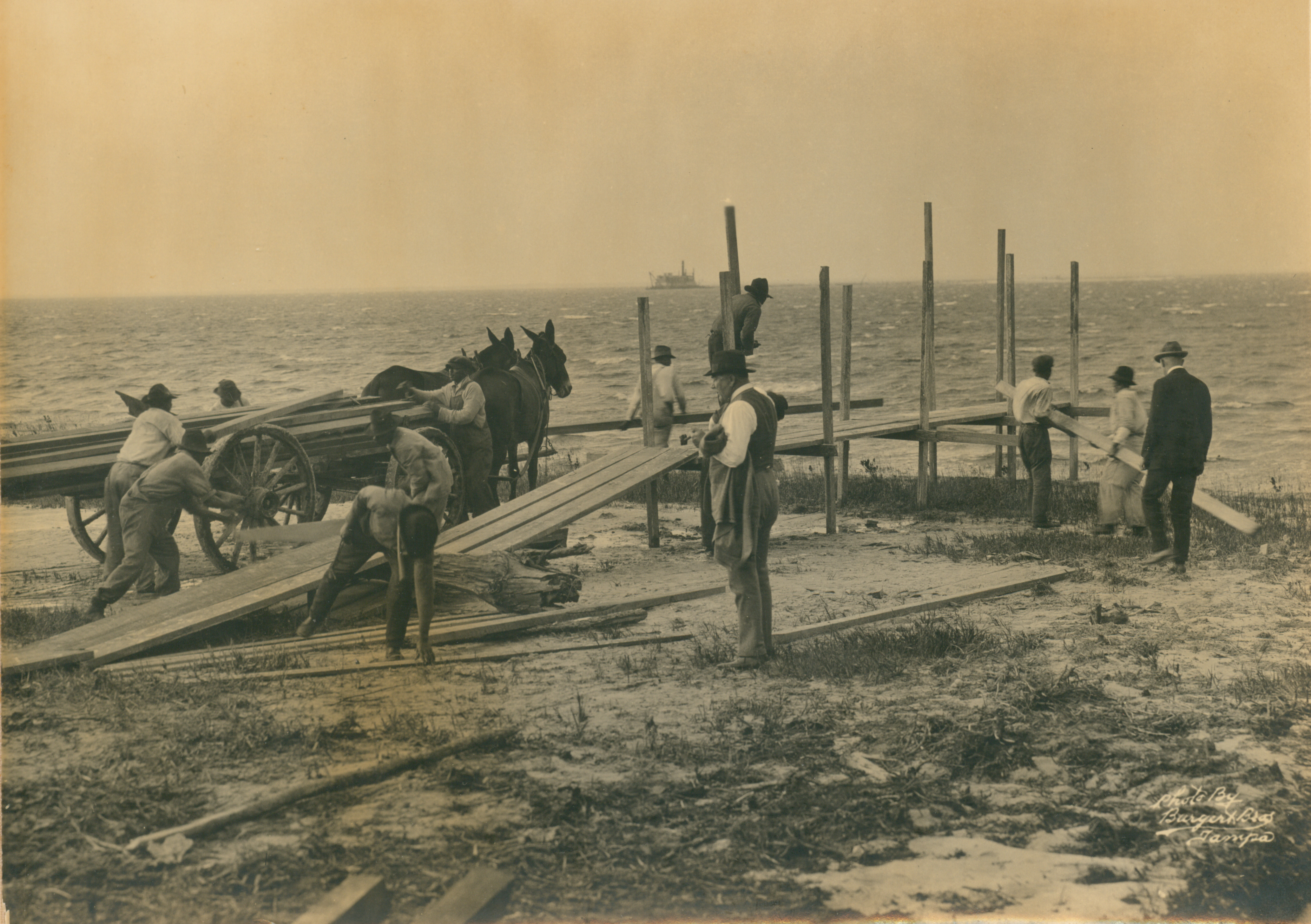
Workers build the original Gandy Bridge, which opened in 1924. [Photo courtesy of USF Special Collections]
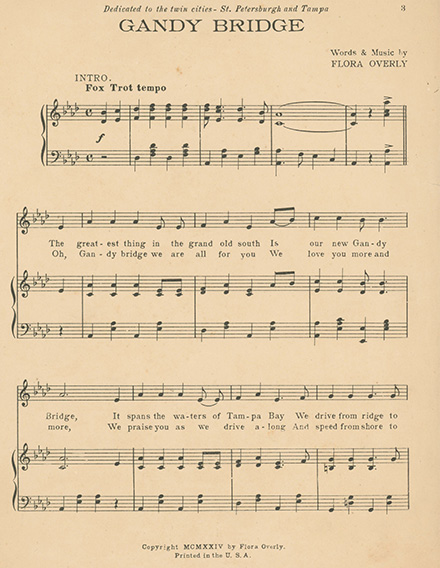
Sheet music for a song celebrating the Gandy Bridge. [Photo courtesy of USF Special Collections]
Linkous compared the Gandy Bridge to New York’s Triborough Bridge, which opened 12 years later. Now The Robert F. Kennedy Bridge, it linked Manhattan, Queens and the Bronx. “In New York, you could then live in the suburbs and work in the city,” she said. “The Gandy Bridge showed you could live in one city but work in and visit the other.”
Elected officials understood the importance of the Gandy Bridge in 1924.
“When it opened, 16 governors were there,” Mormino said. “It was a huge event.”
That original bridge was later taken over by the government and ceased charging tolls before being dismantled and replaced with one of the same name. All that remains of that first is one of the four entrance towers that marked both the Pinellas and Hillsborough sides. That tower is now on display at Heritage Village, which is an indoor and outdoor museum dedicated to Pinellas’ history.
The Gandy Bridge collection can be viewed by appointment at Special Collections.